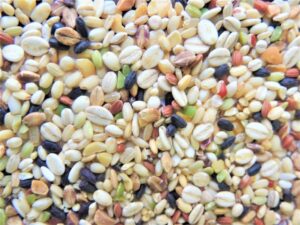佐藤昌宏ギャラリー◆水彩画で描く「あいちの伝統野菜」⑤
キミ子方式で描く「あいちの伝統野菜」第5弾です。作家の佐藤昌宏(さとうまさひろ)氏と作品を撮影された亀谷泰朋(かめがいやすとも)氏のご厚意により、作品の写真データを使用しております。全7回にわけて水彩画で描いた「あいちの伝統野菜」35品目すべてを5品目ずつ掲載していきます。(Web掲載により実物より大きさや透明度などが異なる点をご了承ください)
宮重大根
清須市春日宮重町が原産地とされる。今日我が国で消費される大半の青首大根のルーツである。
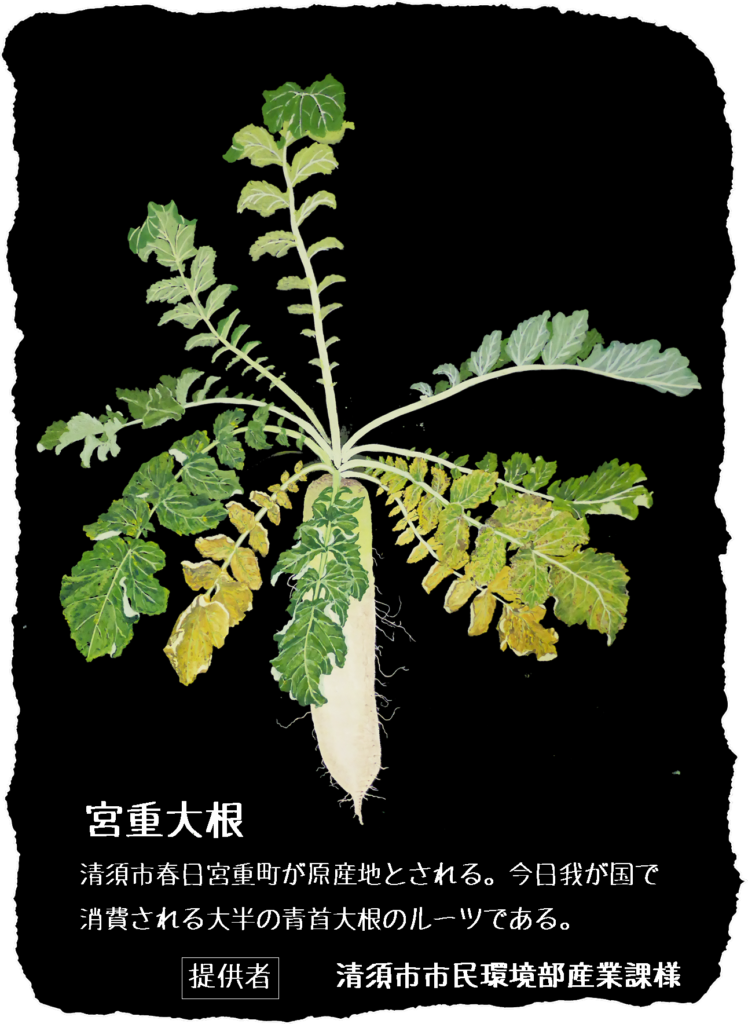
Miyashige-daikon
“Miyashige” is a place name. The place of origin is Miyashige-cho, Haruhi, Kiyosu-city. It is the roots of “blue neck radish” which is consumed in mass in Japan.
野崎白菜2号
大正5年に中川区で生まれた日本初の結球白菜。みずみずしく食味良く、希少なので幻の白菜とも。
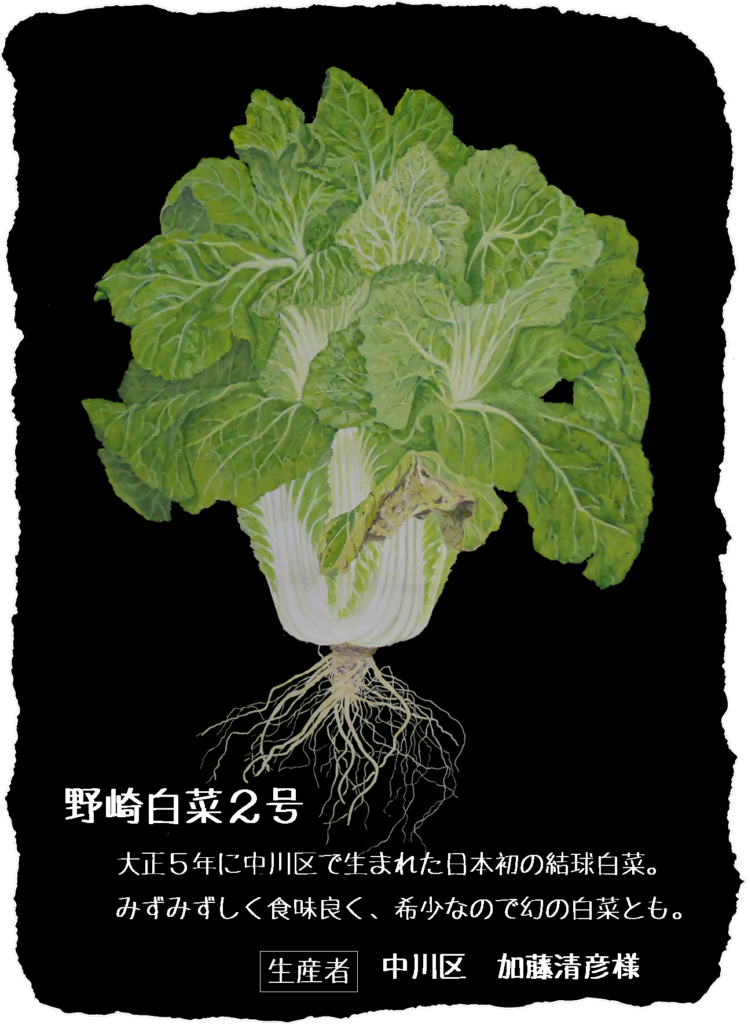
Nozaki-Hakusai No.2
“Nozaki” is a place name. The place of origin is Nozaki-cho, Nakagawa-ku, Nagoya-city. It is a Chinese cabbage with a good head that was cultivated for the first time in Japan in 1916. It is called ” legendary Chinese cabbage”, beecause it is rare.
法性寺ねぎ
岡崎市法性寺町原産地。九条ネギを起源に移植改良された。甘みのある濃い味が特徴の冬の味。
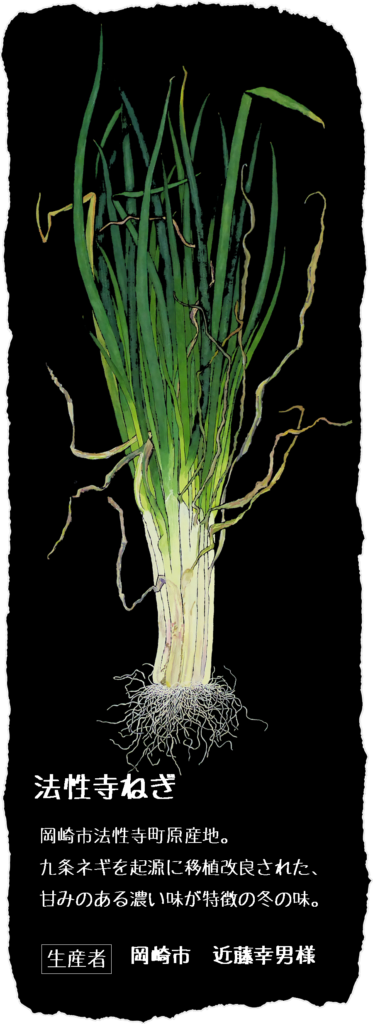
Hosshouji-Negi
“Hosshouji” is a place name. “Negi” is welsh onion. Producing area is Hosshoji -cho, Okazaki-city. It improved transplantation based on the “Kujyo-Negi” of Kyoto. It is characterized by sweet deep taste.
白花千石(ふじまめ)
名前はさやの形が千石船に似ているからとか。独特の香とサラッとした食感を持つ初夏野菜。
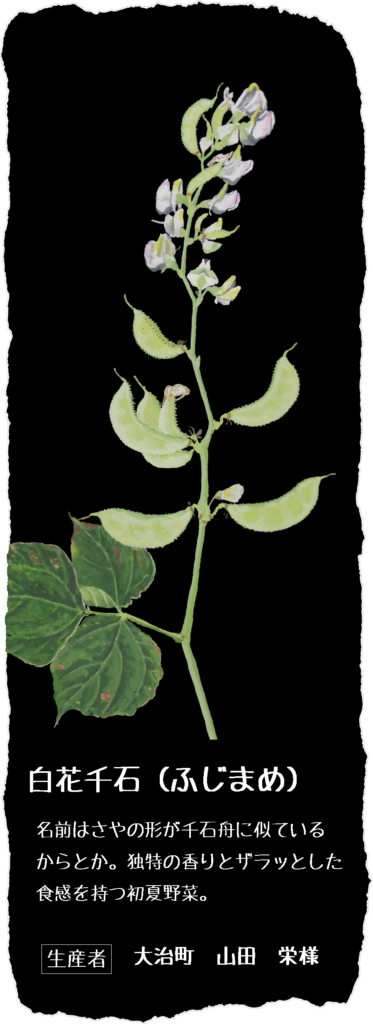
Shirohanasengoku
The origin of the name is because the shape of the pod resembles “Sengokufune”. “Sengokufune” is a large Japanese ship. It has a unique incense and a smooth texture. It is a vegetable harvested in early summer.
十六ささげ
さやの中に豆が16個あるとか。いんげんより柔らかくシャキシャキの歯切れの良さが特徴。
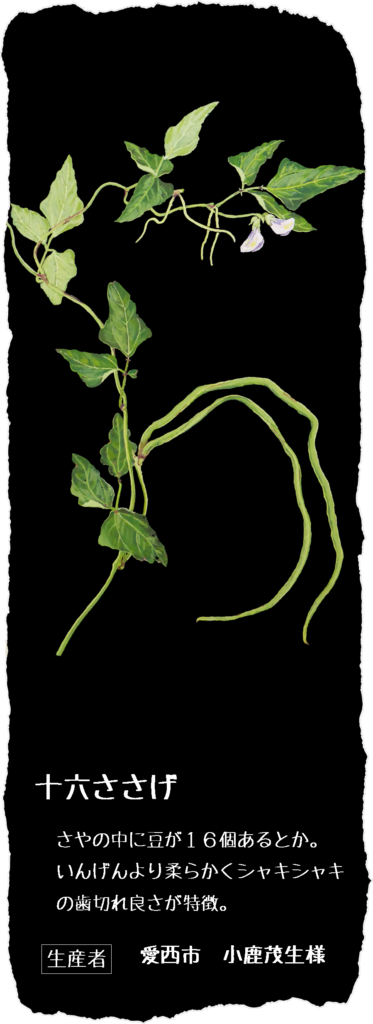
Jyurokusasage
It is a kind of cowpea. The origin of the name is because there are 16 beans in the pod. It is softer than inlaid. It is characterized by being softer and more crispness than Green Beans.
※これらの作品の著作権は作者および所有者に帰属します。当協会も使用権をお借りしているだけなので、どなたもコピー等で使用することはできません。ご了承ください。
ご利用になりたい場合は、お問合せフォームからご相談ください。
The copyright of these works belongs to the author and the owner. Since our association also borrows the right to use, no one can use it with copy etc.
Please contact us from the inquiry form if you wish to use it.
佐藤昌宏ギャラリー◆水彩画で描く「あいちの伝統野菜」⑤
【参考資料】
愛知県HP「あいちの伝統野菜」


